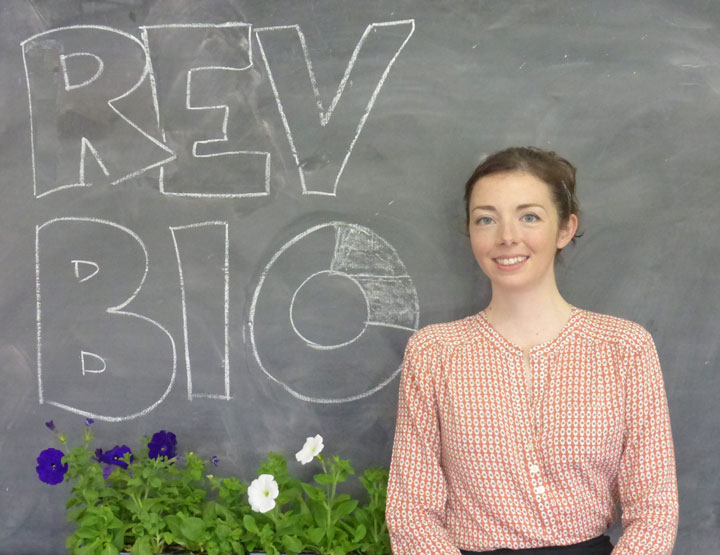Throughout history colors have been a sign of the times. For Ancient Romans purple was a sign of strength. The Victorians wore black as a symbol of austerity. Green was associated with fertility in Celtic myths.

The twenty-first-century—an age marked by blink-and-you’ll-miss-it technology upgrades and #socialmedia sensory overload—is multicolored. If it’s an era where any color is possible, shouldn’t it be the era where all colors are possible?
Enter Petunia circadia, a flower that changes colors throughout the day.
Keira Havens (MBB ’04), chief executive officer of Revolution Bioengineering, and the company’s co-founder and chief scientific officer, Nikolai Braun, are tapping the emerging field of synthetic biology to create a new plant whose marriage of art and science could appeal to anyone—from the flower enthusiast to the GMO (genetically modified organism) skeptic.
“This flower takes the technology out of the traditional corporate-controlled, agriculture-controlled context,” says Havens, noting there are fewer restrictions on non-food GMOs, whereas both government restrictions and public resistance continue to challenge food GMOs. “Our petunia has no other function than to be beautiful.”
Anthocyanins are the pigments in flowers that control color. Rather than modify the petunia’s DNA to produce a flower colored by non-plant molecules (as with the Glowing Plant), or modify the production of anthocyanins in the petunia, the Revolution Bio team is creating a color change by controlling genes that modify the anthocyanin environment with the plant’s circadian clock.
“With the circadian clock—people have it, plants have it, animals, too. We are using that clock to time a change in color,” Havens says of the mechanism within us that dictates our body’s 24-hour cycle as it relates to our environment. “Anthocyanins are sensitive to their environment, so when you change this environment of these molecules you change the color.”
Havens, who grew up among pink and purple sweet pea flowers, fragrant gardenia, and lush hills in Hawaii, says that she hopes Petunia circadia will help “jump start a conversation about nature, technology, and society, and how we all interact.”
She adds, “Maybe our pretty flowers don’t contribute to a cure for diabetes, but maybe they will encourage people to view biotechnology in a new way—to view it as a technology with possibilities instead of harm.”
Revolution Bio has launched a crowdfunding campaign to help further develop Petunia circadia. It hopes to begin offering its on-demand, color-changing flower in 2017 and to show the petunia as part of an art installation in London in 2016. Future plans include work on blue roses and expanding its offerings to include custom flower color work.
“There is a lot of opportunity in bringing the tools of biotech to the horticulture world to develop new and interesting flower types and colors,” she says. “We would like to be the go-to people for horticulture in general.”